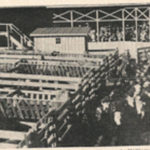
Tag Archives history
History: B.C. Police Sign Off
Reprinted from the December 1950 issue of Canadian Cattlemen

History: Williams Lake Sale
Reprinted from the November 1950 issue of Canadian Cattlemen
History: Trail to Sounding Lake, Pt. 2
Reprinted from the November 1950 issue of Canadian Cattlemen
History: Trail to Sounding Lake
Reprinted from the October 1950 issue of Canadian Cattlemen
History: A Short History of Nemiscam National Park
Reprinted from the October 1950 issue of Canadian Cattlemen
History: “Charlie” Knox – Pioneer Western Canadian Stockman
Reprinted from the October 1950 issue of Canadian Cattlemen
History: Bunkhouse philosophy
Reprinted from the September 1950 issue of Canadian Cattlemen
History: Buffalo Park Grazing Ass’n Community Pasture
Reprinted from the November 1950 issue of Canadian Cattlemen
History: Those Wild “Payment” Days at Old Fort Pitt
Reprinted from the October 1950 issue of Canadian Cattlemen
History: Bull Teams of the Cariboo
Reprinted from the October 1950 issue of Canadian Cattlemen



